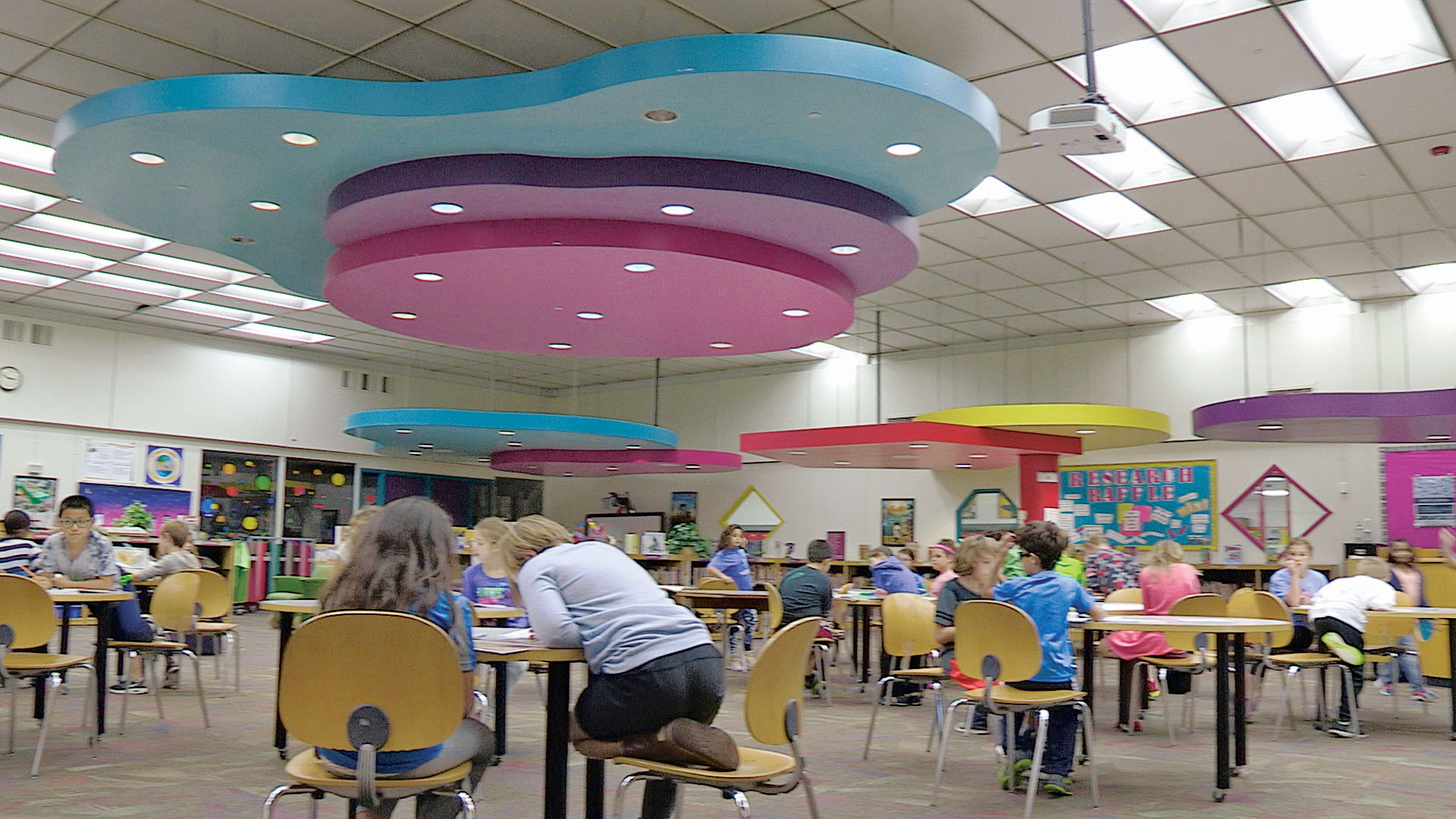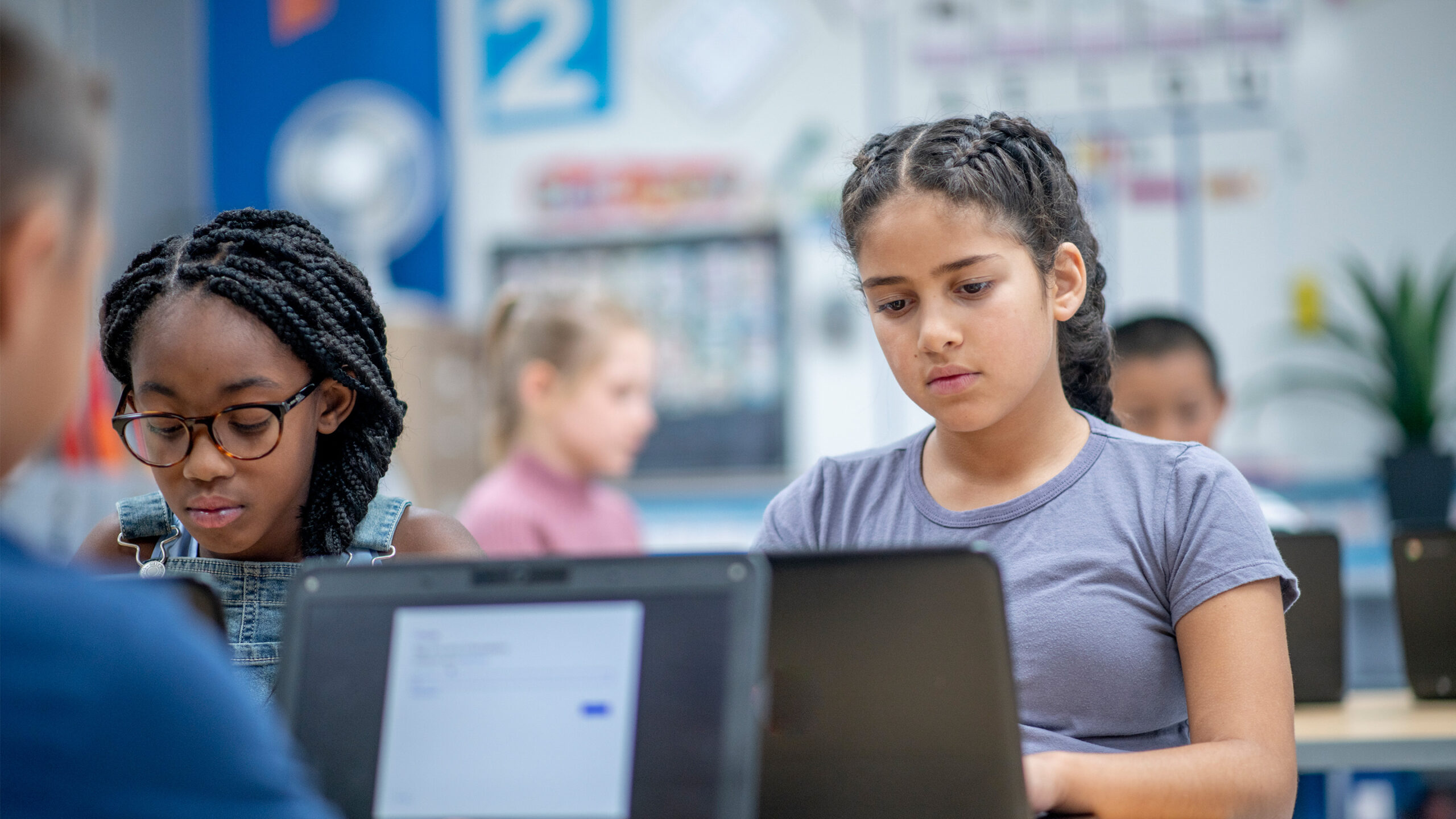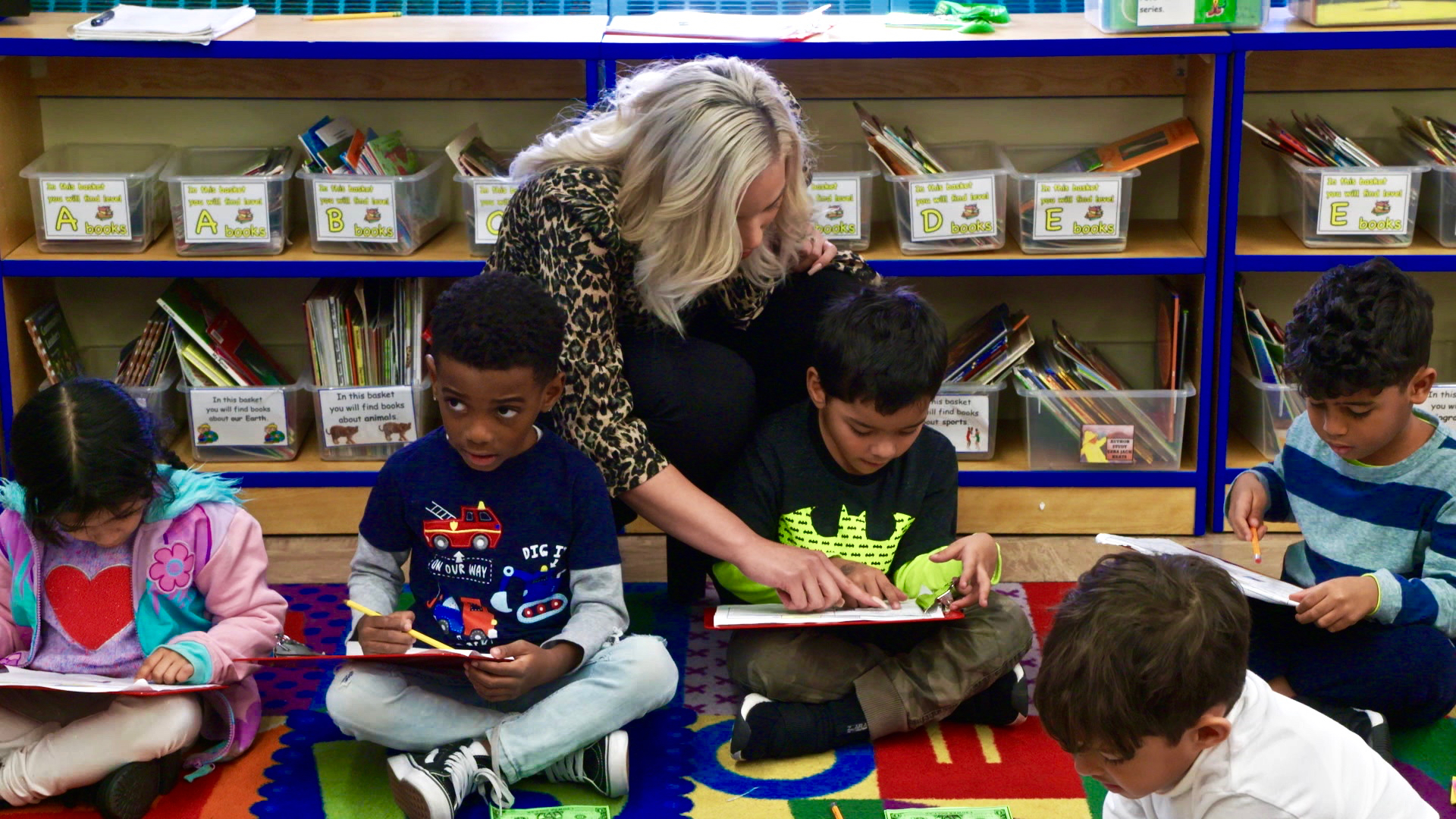[ad_1]
A bunch of heart school faculty college students in full beekeeping gear examines one in every of many hives their school retains inside the woods shut by. “Ooh, there’s honey!” says one excitedly. “I see nectar!” says one different.
These eager fifth and sixth graders from Birmingham Covington, a public magnet school in suburban Michigan focused on science and know-how, are empowered to become self-directed learners via hands-on experiences in and outside their classroom.
Birmingham Covington’s student-centered philosophy is embedded all by means of the curriculum, from third- and fourth-grade programs focused on instructing specific particular person resourcefulness to an just about wholly unbiased capstone class in seventh and eighth grade known as Thinkering Studio. Lecturers on the school normally say they’re “instructing kids to point out themselves” and barely reply questions immediately; as an alternative they ask faculty college students to ponder completely different sources of information first. Even the lecture rooms, with their spacious communal tables and movable partitions, emphasize fluid group and peer-to-peer dynamics over teacher-led instruction.
The 650-student school affords grades 3 via 8 solely and pairs grades collectively, following evaluation that reveals that mixing age groups accelerates finding out. For larger than a decade, Birmingham Covington’s faculty college students have ranked at or above the ninety fifth percentile in complete effectivity for all Michigan elementary and heart colleges.
By relentlessly focusing the classwork on pupil curiosity and independence, the educators at Birmingham Covington hope to transform faculty college students into full of life learners who could be worthwhile all by means of their lifetimes.
“In the event you get kids collaborating collectively, they become additional resourceful and they also see themselves as specialists,” said Mark Morawski, who’s been the principal since 2013. “Abruptly you’ve opened the ceiling to what kids are able to do, and they also shock you typically.”
Fixing Precise-World Points: The Bee Enterprise
video
Birmingham Covington’s distinctive bee enterprise, like a number of the coursework prioritized on the school, was pushed by pupil curiosity. After finding out an article regarding the extinction of honeybees of their science literacy class, fifth- and sixth-grade faculty college students said they wanted to do one factor to help.
Throughout the class, which mixes inquiry-based science and English language arts (ELA), faculty college students assemble their evaluation, literacy, and collaboration experience via small group initiatives aimed towards effecting lasting change spherical real-world points. Engaged on a wide range of actions—from establishing an web web site to managing an precise beehive—faculty college students become additional full of life and engaged learners, lecturers say.
“Science literacy is instructing our youngsters to be curious regarding the world spherical them, with the problems they set up,” said ELA teacher Pauline Roberts, who co-teaches the class. “While faculty college students, they’re finding out the easiest way to become environment friendly brokers of change. It’s larger than the science content material materials—it’s about serving to to develop the residents that we hope our children become.”
Educating Resourcefulness
video
All by means of Birmingham Covington, every coursework and instruction push faculty college students to review lifelong experience like independence and resourcefulness, which lecturers encourage early on inside the main grades.
Third- and fourth-grade teacher Jessie Heckman says she empowers her faculty college students to become additional resourceful by fixing widespread points with the assistance of their classmates. As a substitute of elevating their arms as soon as they’ve a question or encounter a hurdle, for example, Heckman’s faculty college students clip clothespins to their laptop methods and fellow faculty college students circulation into spherical to troubleshoot—a system she calls the help desk.
“Kids have to review teamwork-based experience on account of every completely different class in each different subject that they’ve—third via eighth grade—requires them to work in quite a few sized groups enterprise completely completely different duties,” Heckman explains.
Modeling Collaboration: Coach Labs
video
Faculty college students aren’t the one ones at Birmingham Covington bettering their collaboration experience—lecturers moreover set up as a “group of learners” who use deliberate, peer-to-peer recommendations to help each other enhance pupil outcomes all by means of the school.
The school’s voluntary Coach Labs—facilitated by an tutorial coach and organized spherical a clear, written protocol—enable lecturers to copy on their craft with assist from their buddies. By way of the labs, small groups of lecturers observe each other’s programs after which provide constructive recommendations spherical a mentioned purpose.
“We’re really asking lecturers to step outside of their comfort zones,” said Roberts, who serves as a result of the lead facilitator inside the labs. “We’re creatures who reside behind closed doorways. To experience being in one other particular person’s classroom is admittedly extremely efficient.”
Rising Independence for Older Learners
video
As they near the highest of their time on the school, Birmingham Covington seventh- and eighth-grade faculty college students are accustomed to self-reliance and problem-solving. They put these experience to utilize in Thinkering Studio, an elective class the place they design their very personal unbiased finding out initiatives, and Interact, a class focused on design contemplating—a system of fixing points that follows the steps of inquiry, ideation, prototyping, and testing.
In Interact, lecturers Roy McCloud and Mathew Brown data faculty college students to work on quite a few self-directed, team-oriented initiatives like designing a model new sport for third graders or establishing a roller coaster. Their assist and recommendations direct faculty college students in direction of the right property whereas encouraging them to dig deeper: Did faculty college students ask the right questions? Did they get the right data? Did they go to completely different groups for recommendations?
In these culminating programs, as inside the curriculum additional usually, lecturers act as guides barely than instructors, directing faculty college students in direction of helpful property nonetheless lastly insisting they clear up their very personal points.
College Snapshot
Enrollment
650 | Public, Suburban
Per Pupil Expenditures
$14372 District
Free / Diminished Lunch
5%
DEMOGRAPHICS:
83% White
6% Asian
6% Black
3% Multiracial
1% Hispanic
Data is from the 2015-2016 academic 12 months.
This revolutionary, student-centered technique to finding out—the bedrock of the school’s imaginative and prescient—takes the prolonged view, serving to varsity college students develop experience and pursuits they are going to proceed to draw on after they depart the school. The school believes that this model greater prepares faculty college students for real-world challenges, since modern workplaces are increasingly collaborative and include difficult, interdisciplinary draw back fixing.
“The final phrase questions we’re going to be requested by future employers is ‘Can this specific particular person work correctly in a workforce? Does this specific particular person have the facility to draw back clear up and critically suppose?’” said Morawski. “Because of our faculty college students are additional resourceful, they’ve additional intrinsic motivation inside the finding out course of and at last, are finding out to be learners.”
[ad_2]
Provide hyperlink



